Archaeometric Analysis of Encrustations Adhering to Pietra Ollare Fragments from the Medieval Village of Nogara
Abstract
1. Introduction
1.1. Context
1.1.1. Pietra Ollare in Italy during the Early Middle Ages
Dario Monaco
- High thermal refractoriness;
- Low porosity (not prone to liquid absorption);
- Chemical stability;
- Very low hardness (from 1 to 4 on the Mohs scale), so they are easily carved.
1.1.2. Nogara: Medieval Village in Po Valley
Dario Monaco, Fabio Saggioro
2. Materials and Methods
2.1. Materials
Dario Monaco
2.2. Methods
2.2.1. Stereo Microscope Observations
Dario Monaco, Carmela Vaccaro, and Elena Marrocchino
- Considerable encrustation presence;
- Chronologic collocation between the 9th and 10th centuries, with two exceptions, Samples 1 and 10. Sample 1 does not have a clear dating, but the considerable encrustation presence motivated the sampling. Sample 10 is chronologically collocated between the 11th and 13th centuries but also contained considerable encrustation.
2.2.2. SEM-EDS Analysis
Dario Monaco, Carmela Vaccaro, Elena Marrocchino, and Negar Efthekari
- Source: LaB6.
- Maximum acceleration tension: 30 kV.
- Electrons emitted were detected in the presence of gas.
- Energy-dispersive X-ray spectrometry (EDS) for X-ray microanalysis.
- Could conventionally operate in high vacuum and with variable pressure (SEM XVP), with maximum pressure: 6 torr.
- Superficial morphology and topography (millimeter to submicrometer scale).
- Chemical element identification in areas selected by the user; chemical element identification in particles (only particles with dimension greater than 1 micron).
- Elemental quantitative analysis (also Z < 10 elements) and compositional maps.
2.2.3. Pollen Analysis
Dario Monaco, Marco Marchesini
3. Results
3.1. SEM-EDS
3.1.1. Dario Monaco, Carmela Vaccaro, and Elena Marrocchino
SEM-EDS: Pietra Ollare and Encrustations
3.2. Pollen
Dario Monaco and Marco Marchesini
4. Discussion
4.1. Pollen
Dario Monaco and Marco Marchesini
- Most probably present in the sediment in which the fragments of the containers were preserved.
- Suspended in air (especially Poaceae) and then deposited in the containers during or shortly after cooking.
- Present in the water used during cooking; therefore, it would not be pollen directly indicative of the food prepared in the containers.
4.2. Pietra Ollare
4.2.1. Pietra Ollare with Encrustations
4.2.2. Pyrite
Dario Monaco, Carmela Vaccaro, and Elena Marrocchino
4.2.3. Ca and P quantities
Dario Monaco, Carmela Vaccaro, and Elena Marrocchino
5. Conclusions
Dario Monaco
- Analysis of ceramic materials from the same contexts to understand if the use of the containers was differentiated and specific based on the manufacture material: ceramic or pietra ollare.
- Isotopic analysis of samples from pietra ollare to add detail to the findings.
- Analysis of the soil near the excavation site.
- An experimental archaeology study using a pietra ollare container used for the preparation of meat dishes that must be analyzed after a certain period of burial to identify the validity of the hypothesis and possible influential diagenetic factors.
Supplementary Materials
Author Contributions
Funding
Data Availability Statement
Acknowledgments
Conflicts of Interest
Appendix A


References
- Mannoni, T.; Pfeifer, H.R.; Serneels, V. Giacimenti e cave di pietra ollare nelle Alpi, La pietra ollare dalla preistoria all’età moderna. In Proceedings of the Atti del Convegno, Como, Italy, 16–17 October 1982; New Press: Como, Italy, 1987; pp. 7–45. [Google Scholar]
- Saggioro, F.; Maccadanza, E. La diffusione della pietra ollare in Pianura Padana: Primi dati di una ricerca in corso. In Proceedings of the IX Congresso Nazionale Di Archeologia Medievale, Alghero, Italy, 28 September–2 October 2022; pp. 176–182, ISBN 9788892851474. [Google Scholar]
- Antonelli, F.; Santi, P.; Renzulli, A.; Bonazza, A. Petrographic Features and Thermal Behaviour of the Historically Known ‘Pietra Ollare’ from the Italian Central Alps (Valchiavenna and Valmalenco); Geological Society Special Publication: London, UK, 2006; Volume 257, pp. 229–239. [Google Scholar]
- Saggioro, F.; Mancassola, N.; Zoni, F.; Maccadanza, E. Storia di un villaggio alpino: Gli scavi presso il sito di Piuro (SO). In Proceedings of the IX Congresso Nazionale Di Archeologia Medievale, Alghero, Italy, 28 September–2 October 2022; pp. 133–138, ISBN 9788892851498. [Google Scholar]
- Baita, C.; Lottici, P.P.; Salvioli-Mariani, E.; Vandenabeele, P.; Librenti, M.; Antonelli, F.; Bersani, D. An integrated Raman and petrographic characterization of Italian mediaeval artifacts in pietra ollare (soapstone). J. Raman Spectrosc. 2014, 45, 114–122. [Google Scholar] [CrossRef]
- Sannazzaro, M. Prime considerazioni sulla presenza di pietra ollare nel Salento. In Studi di Antichità; Pubblicazione del Dipartimento di Beni Culturali dell’Università del Salento: Lecce, Italy, 1994; pp. 267–282. [Google Scholar]
- Malaguti, C.; Zane, A. La pietra ollare nell’Italia nord-Orientale. Archeol. Mediev. 1999, 26, 463–479. [Google Scholar]
- Santi, P.; Renzulli, A.; Antonelli, F.; Alberti, A. A Classification and provenance of soapstones and garnet chlorite schist artifacts from Medieval sites of Tuscany (Central Italy): Insights into the Tyrrhenian and Adriatic trade. J. Archaeol. Sci. 2009, 36, 2493–2501. [Google Scholar] [CrossRef]
- Santi, P.; Antonelli, F.; Renzulli, A. A Provenance of medieval pietra ollare artefacts found in archaeological sites of central-eastern Italy: Insights into the alpine soapstone trade. Archaeometry 2005, 47, 253–264. [Google Scholar] [CrossRef]
- Fatoni, R.; Cerri, R.; de Vigo, P. La Pietra Ollare Nelle Alpi. Coltivazione e Utilizzo nelle Zone di Provenienza- Atti dei Convegni e Guida All’Escursione (Carcoforo, 11 Agosto; Varallo, 8 Ottobre; Ossola, 9 Ottobre 2016; All’Insegna del Giglio: Florence, Italy, 2018; ISBN 9788878148819. [Google Scholar]
- Saggioro, F. Nogara Archeologia e Storia di un Villaggio Medievale (Scavi 2003–2008); Giorgio Bretschneider: Editore: Roma, Italy, 2011; ISBN 978-88-7689-261-5. [Google Scholar]
- Gelichi, S.; Librenti, M. ‘L’edilizia in legno altomedievale nell’italia del nord: Alcune osservazioni’, in s. gelichi (a cura di). In I Congresso Nazionale di Archeologia Medievale; All’Insegna del Giglio: Pisa, Italy, 1997; pp. 215–220. [Google Scholar]
- Malaguti, C. La pietra ollare. In Nogara Archeologia e Storia di un Villaggio Medievale (Scavi 2003–2008), 1st ed.; Saggioro, F., Ed.; Giorgio Bretschneider Editore: Roma, Italy, 2011; pp. 211–223. ISBN 978-88-7689-261-5. [Google Scholar]
- Sardella, A.; Canevarolo, S.; Marrocchino, E.; Tittarelli, F.; Bonazza, A. Investigation of Building Materials Belonging to the Ruins of the Tsogt Palace in Mongolia. Heritage 2021, 4, 2494–2514. [Google Scholar] [CrossRef]
- Erdtman, G. The acetolysis method, a revised description. Sven. Bot. Tidskr. 1960, 54, 561–564. [Google Scholar]
- Reille, M. Pollen et Spores d'Europe et d'Afrique du Nord; Laboratoire de Botanique Historique et Palynologie: Marseille, France, 1992; ISBN 2-9507175-1-9. [Google Scholar]
- Nicosia, C. Lo Studio Micromorfologico Dei Depositi di Nogara (VR): Approccio Metodologico e Risultati Preliminari. In Nogara Archeologia e Storia di un Villaggio Medievale (Scavi 2003–2008), 1st ed.; Saggioro, F., Ed.; Giorgio Bretschneider Editore: Roma, Italy, 2011; pp. 89–97. [Google Scholar]
- Arobba, D.; Murialdo, G. Osservazioni palinologiche preliminari sulle incrostazioni di recipienti in pietra ollare di S.Antonino di Perti (Finale Ligure, Savona). Riv. Studi Liguri 1986, LII–1-4, 243–250. [Google Scholar]
- Montanari, M. Alimentazione e Cultura nel Medioevo; Editori Laterza: Roma/Bari, Italy, 1988; ISBN 9788858136614. [Google Scholar]
- Montanri, M. l’Alimentazione Contadina Nell’alto Medioevo; Liguori Editore: Napoli, Italy, 1979; ISBN 9788820707743. [Google Scholar]
- Braudel, F. Civilisation Matérielle, Économie et Capitalisme, XVe-XVIIIe Siècle; A. Colin: Paris, France, 1967. [Google Scholar]
- Bonazza, A.; Lazzarini, L.; Vaccaro, C. Nuovo Contributo Archeometrico allo Studio della “Pietra Ollare” Padana. In Proceedings of the 6 Giornata “Le scienze e l’archeometria”, Este, Italy, 26–27 February 1999; d’Amico, C., Tampellini, C., Eds.; Grafica Atesina: Este, Italy, 2000; pp. 171–180. [Google Scholar]
- Rosling, A.; Suttle, K.B.; Johansson, E.; Van Hees, P.A.W.; Banfield, J.F. Phosphorous availability influences the dissolution of apatite by soil fungi. Geobiology 2007, 5, 265–280. [Google Scholar] [CrossRef]
- Bolan, N.S. A critical review on the role of mycorrhizal fungi in the uptake of phosphorus by plants. Plant Soli 1991, 134, 189–207. [Google Scholar] [CrossRef]
- Holliday, V.T.; Gartner, W.G. Methods of soil P analysis in archaeology. J. Archeol. Sci. 2007, 34, 301–333. [Google Scholar] [CrossRef]
- Bear, F.E. Chemistry of the Soil, 2nd ed.; Reinhold Publishing Corporation: New York, NY, USA, 1964. [Google Scholar]
- Wells, E.C. Investigating Activity Patterns Inprehispanic Plazas: Weak Acid-Extractionicp–Aes Analysis of Anthrosols at Classic Period El Coyote, Northwestern Honduras. Archeometry 2004, 46, 67–84. [Google Scholar] [CrossRef]
- Terry, R.E.; Hardin, P.J.; Houston, S.D.; Nelson, S.D.; Jackson, M.W.; Carr, J.; Parnell, J. Quantitative Phosphorus Measurement: A Field Test Procedure for Archaeological Site Analysis at Piedras Negras, Guatemala. Geoarcheology: Int. J. 2000, 15, 151–166. [Google Scholar] [CrossRef]
- Joschek, S.; Nies, B.; Krotc, R.; Göpferich, A. Chemical and physicochemical characterization of porous hydroxyapatite ceramics made of natural bone. Biomaterials 2001, 21, 1645–1658. [Google Scholar] [CrossRef]
- Sotiropoulou, P.; Fountos, G.; Martini, N.; Koukou, V.; Michail, C.; Kandarakis, I.; Nikiforidis, G. Bone calcium/phosphorus ratio determination using dual energy X-ray method. Phys. Med. 2015, 31, 307–313. [Google Scholar] [CrossRef]
- Legros, R.; Balmain, N.; Bonel, G. Age-Related Changes in Mineral of Rat and Bovine Cortical Bone. Calcif. Tissue Int. 1987, 41, 137–144. [Google Scholar] [CrossRef]
- Peresani, M.; Bertola, S.; Caricola, I.; Nunziante Cesareo, S.; Duches, R.; Ferretti, P.; Margaritora, D.; Marrocchino, E.; Eftekhari, N.; Vaccaro, C.; et al. A taste for the unusual. Green, flat pebbles used by late Neanderthals. J. Anthropol. Archaeol. 2021, 64, 101368. [Google Scholar] [CrossRef]
- Zaichick, V.; Tzaphlidou, M. Determination of calcium, phosphorus, and the calcium/phosphorus ratio in cortical bone from the human femoral neck by neutron activation analysis. Appl. Radiat. Isot. 2002, 56, 781–786. [Google Scholar] [CrossRef]
- Tzaphlidou, M.; Speller, R.; Royle, G.; Griffiths, J.; Olivo, A.; Pani, S.; Longo, R. High resolution Ca/P maps ofbone architecture in 3D synchrotron radiation microtomographic images. Appl. Radiat. Isot. 2005, 62, 569–575. [Google Scholar] [CrossRef]
- Castro, W.; Hoogewerff, J.; Latkoczy, C.; Almirall, J.R. Application of laser ablation (LA-ICP-SF-MS) for the elemental analysis of bone and teeth samples for discrimination purposes. Forensic Sci. Int. 2010, 195, 17–27. [Google Scholar] [CrossRef]
- Ellingham, S.T.D.; Thomson, T.J.U. Meez Islam, Scanning Electron Microscopy–Energy-Dispersive X Ray (SEM/EDX): A Rapid Diagnostic Tool to Aid the Identification of Burnt Bone and Contested Cremains. J. Forensic Sci. 2018, 63, 504–510. [Google Scholar] [CrossRef]
- Mazalan, E.; Chaudhary, K.; Haider, Z.; Abd Hadi, S.F.; Ali, J. Determination of calcium to phosphate elemental ratio in natural hydroxypatite using LIBS. J. Phys. Conf. Ser. 2018, 1027, 012013. [Google Scholar] [CrossRef]
- Nielsen, N.H.; Kristiansen, S.M. Identifying ancient manuring: Traditional phosphate vs. multi-element analysis of archaeological soil. J. Archeol. Sci. 2014, 42, 390–398. [Google Scholar] [CrossRef]
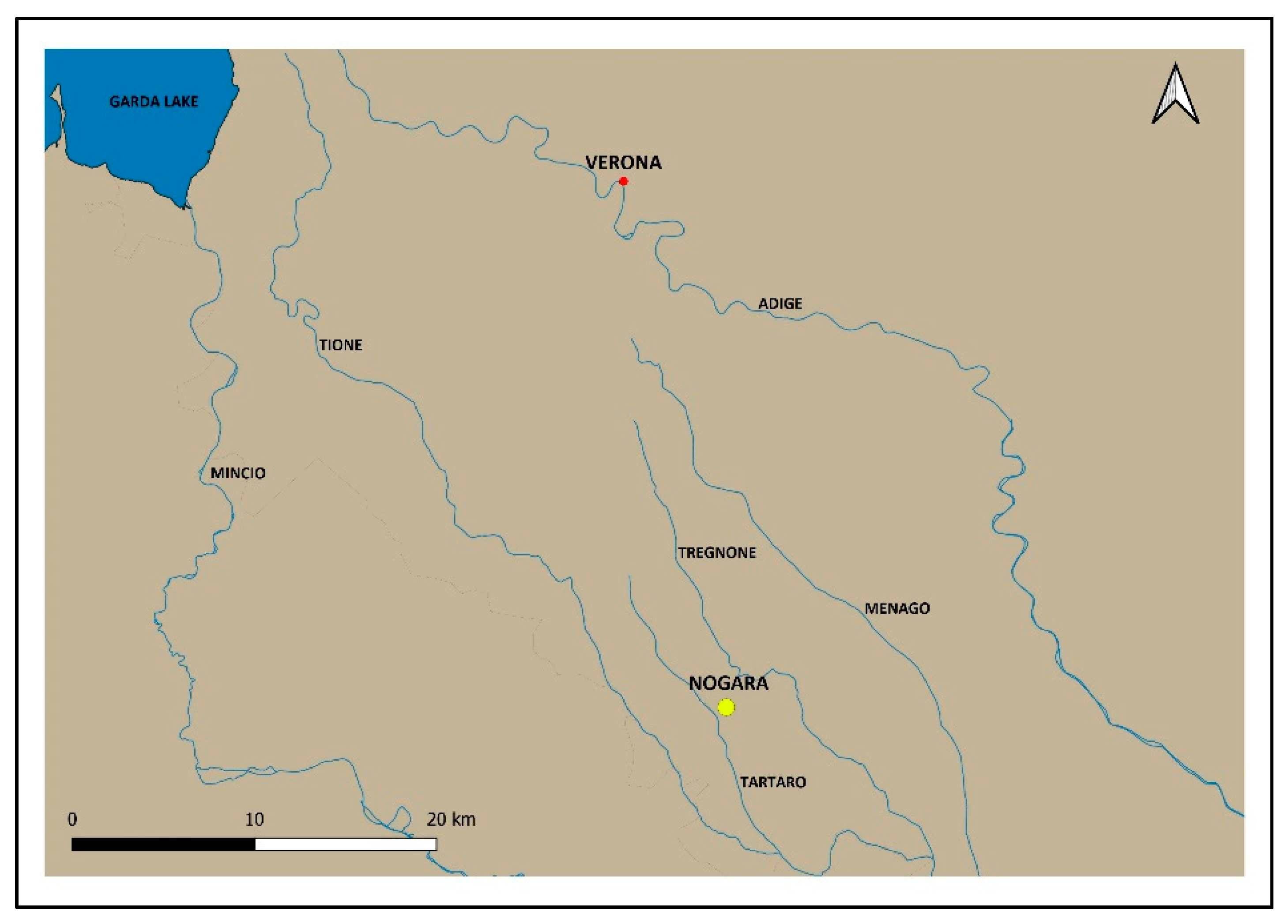
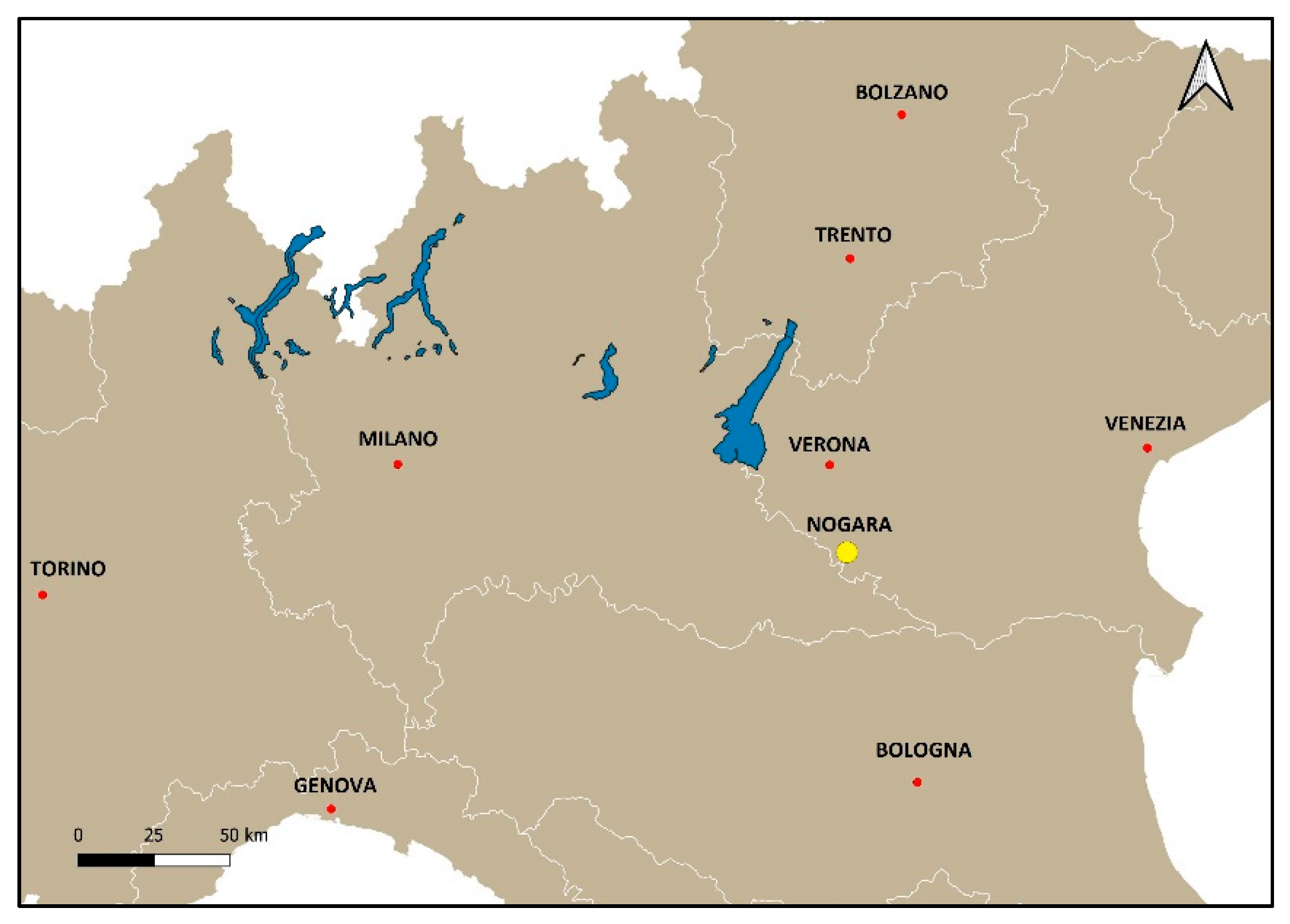
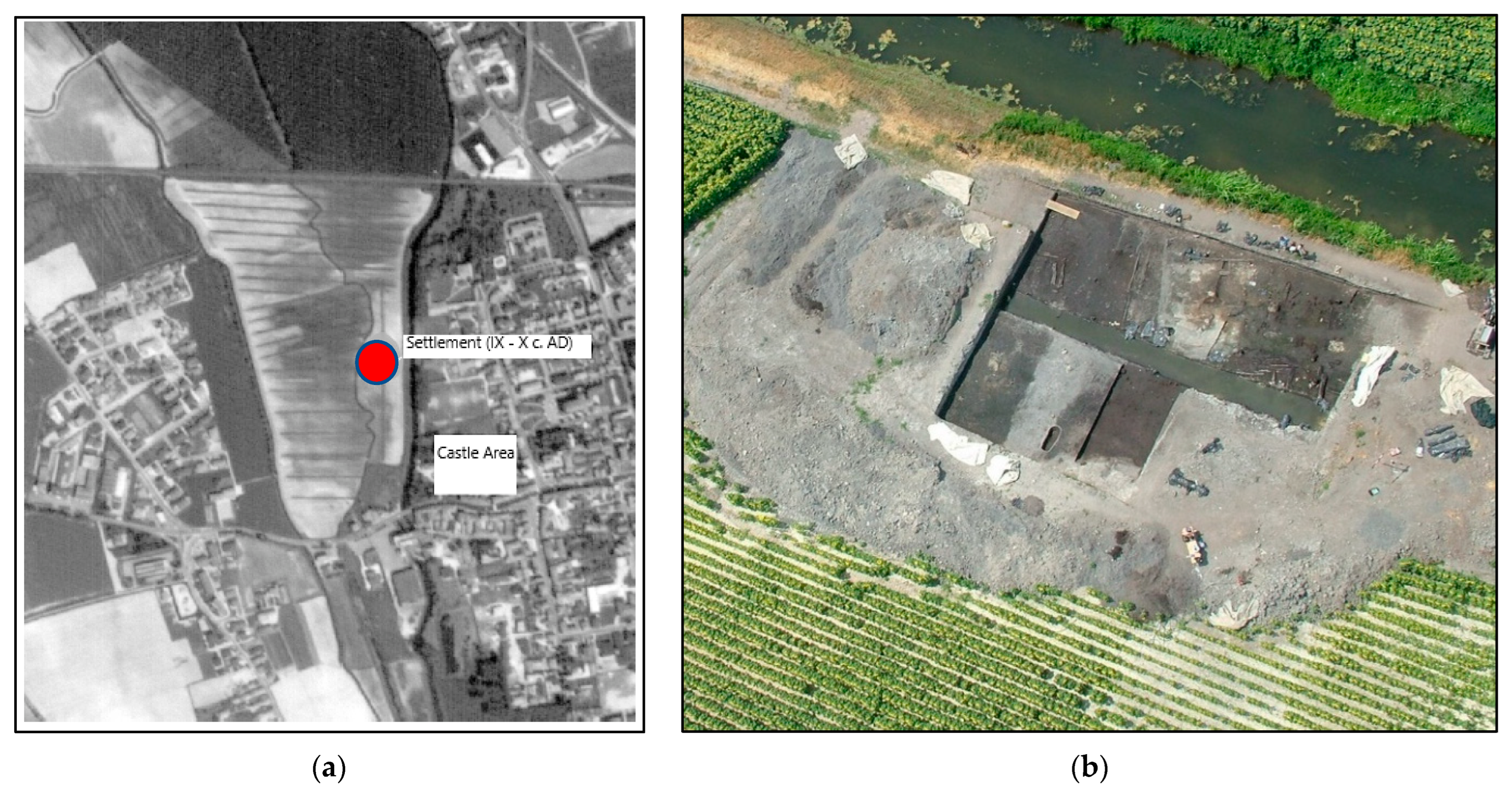
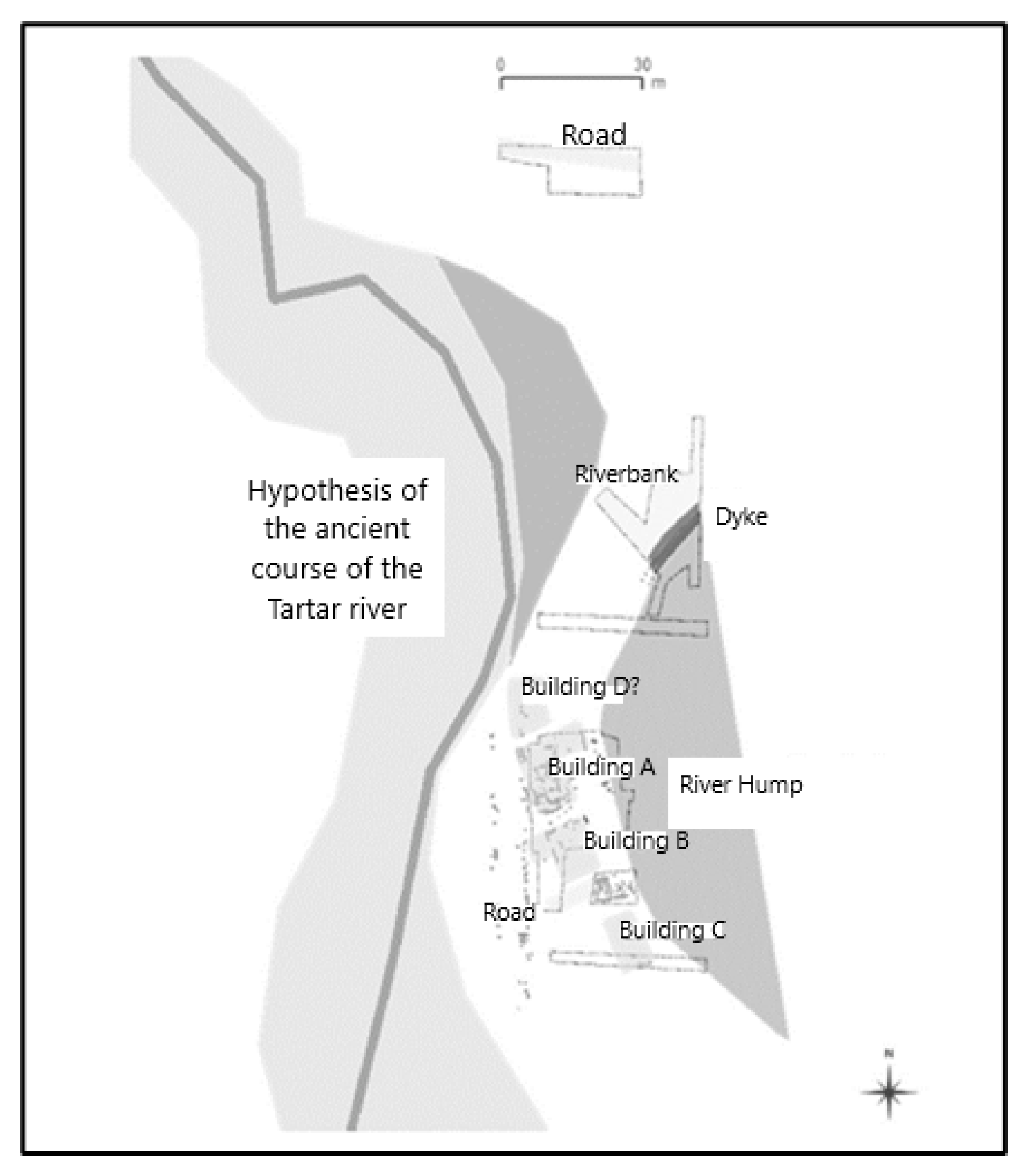
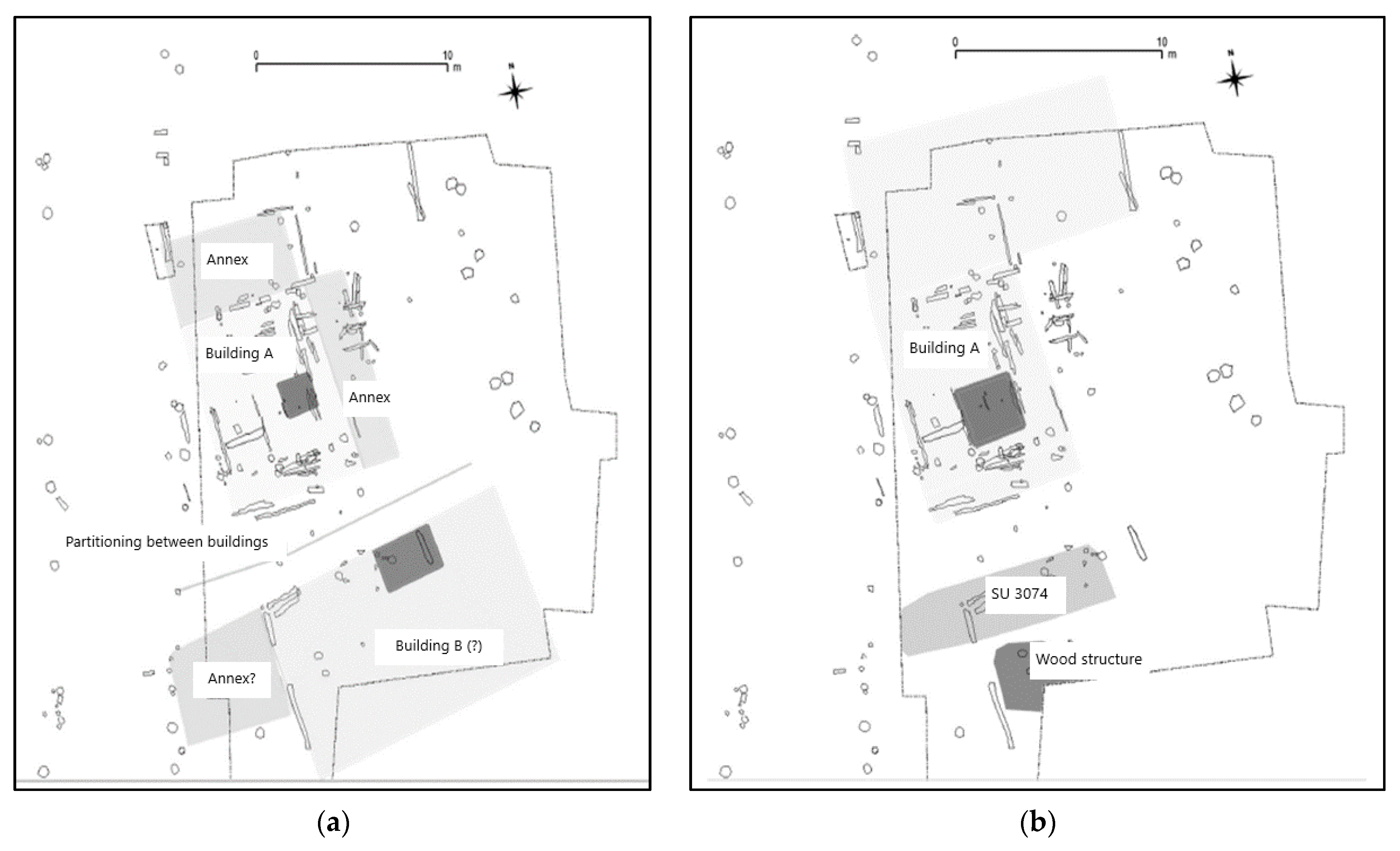
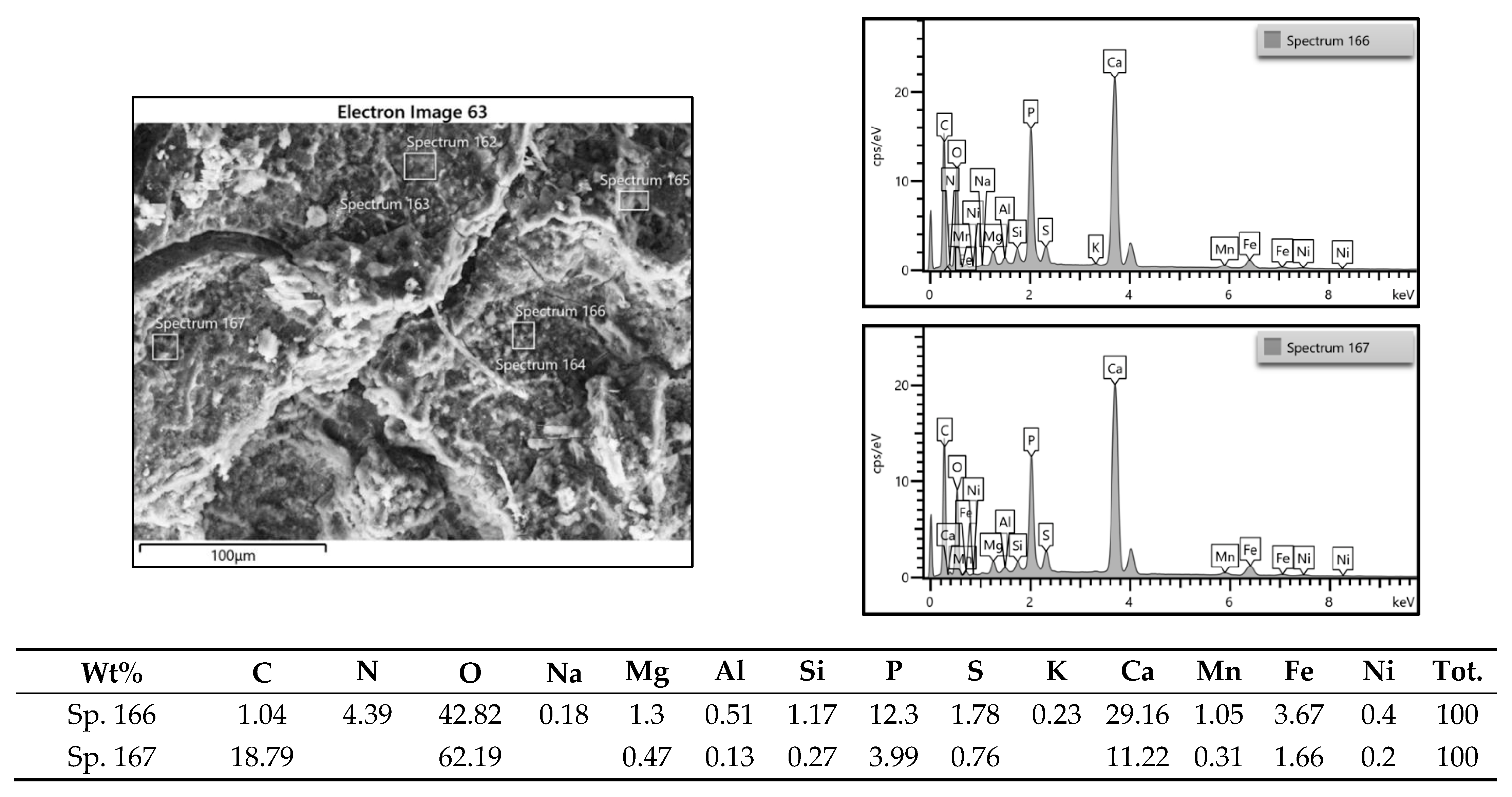
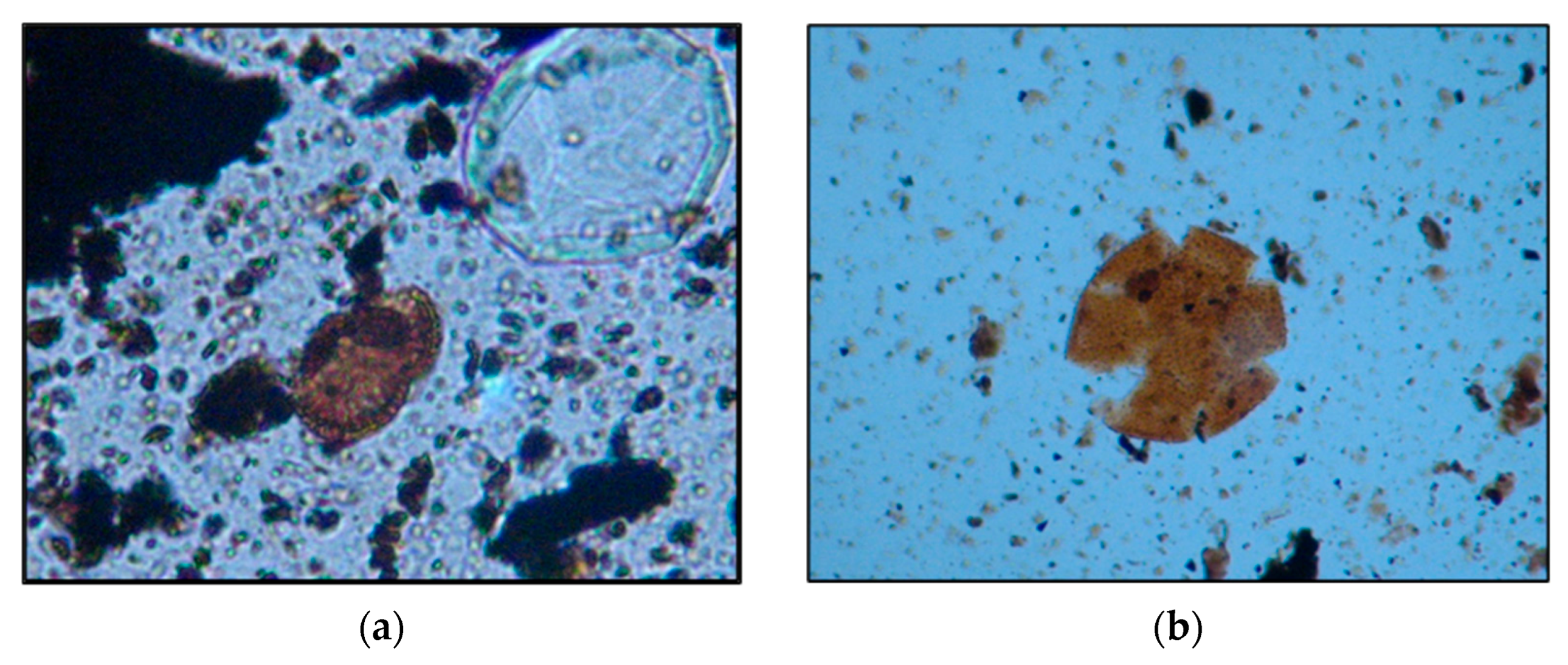
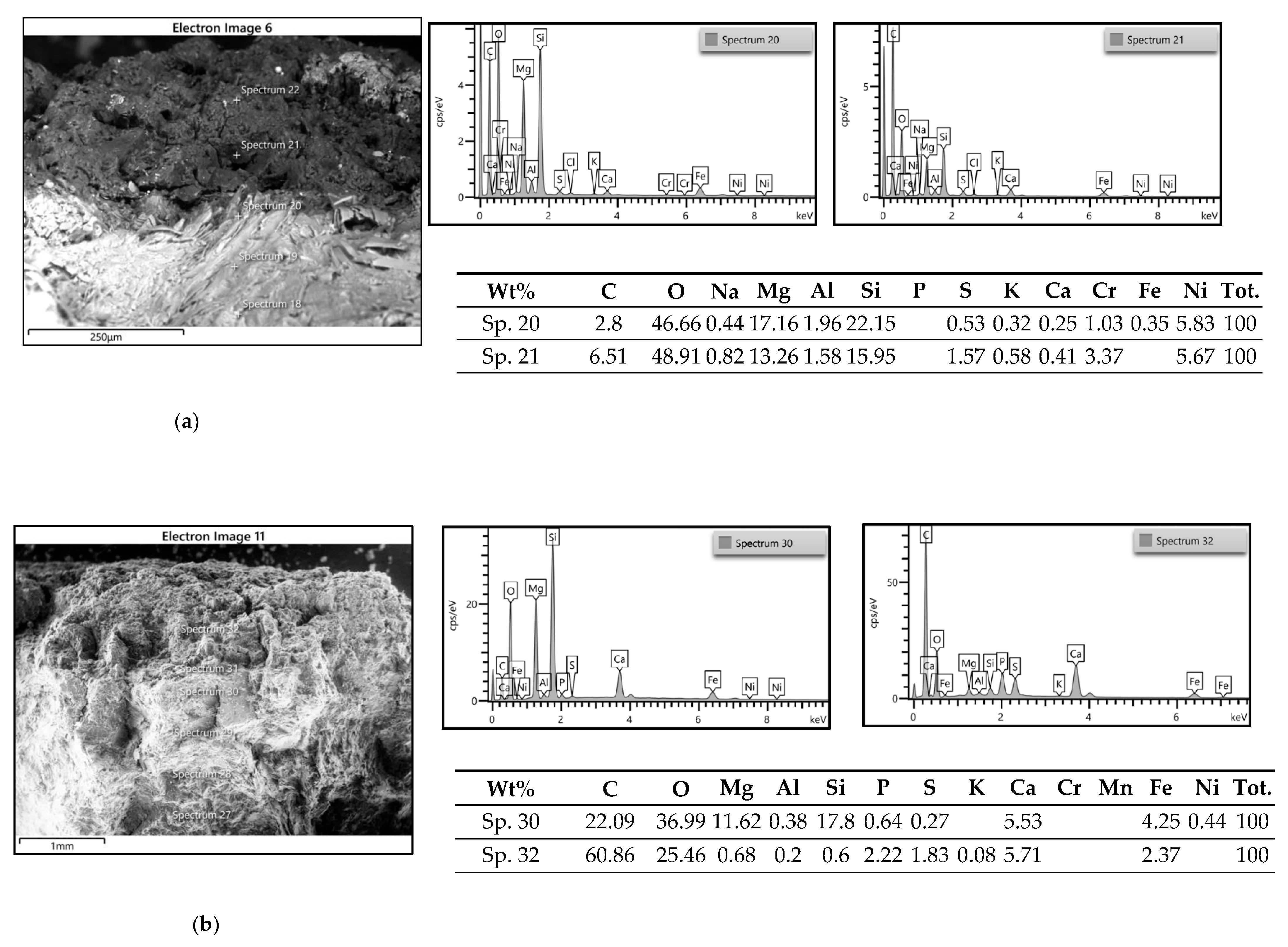
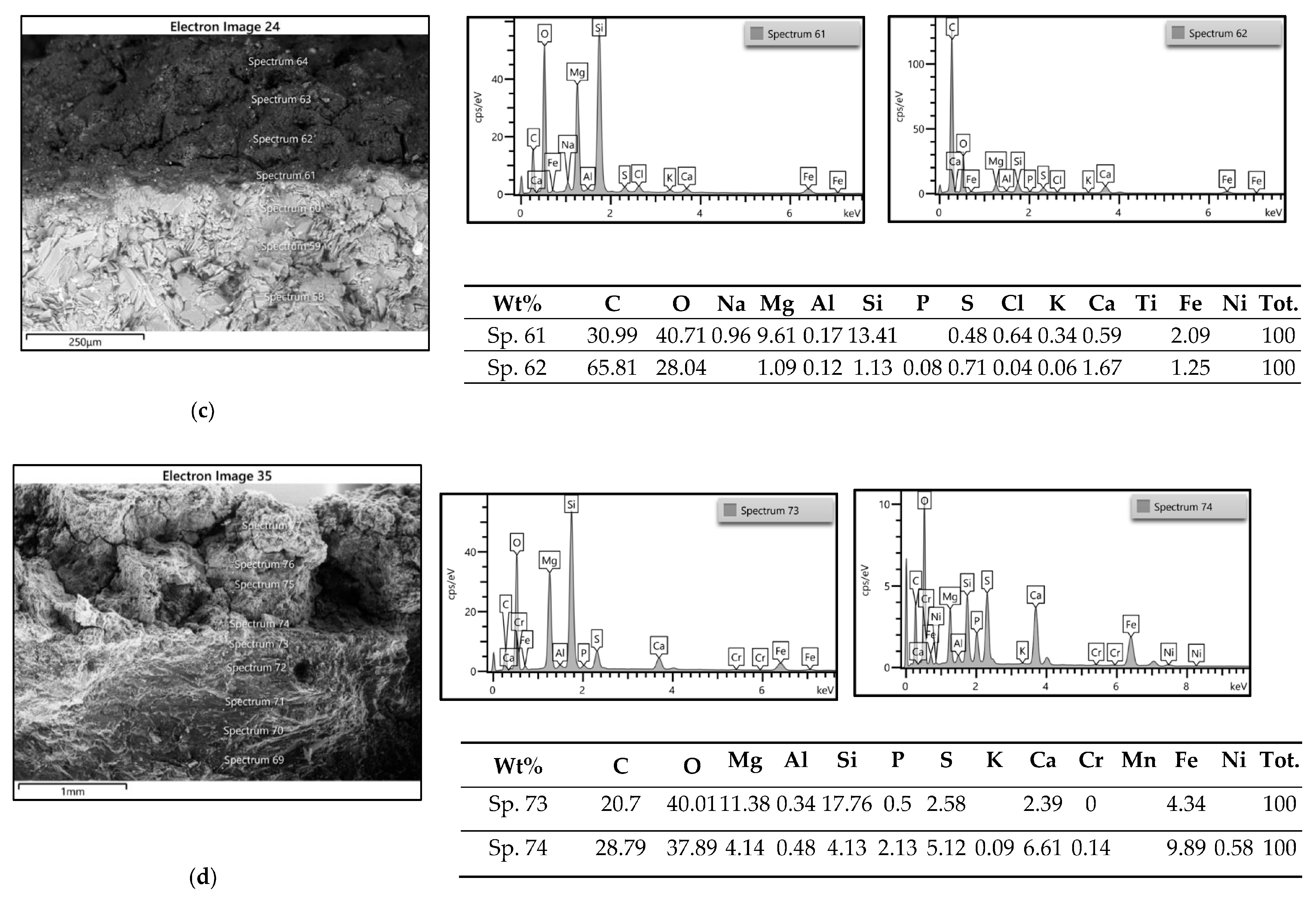
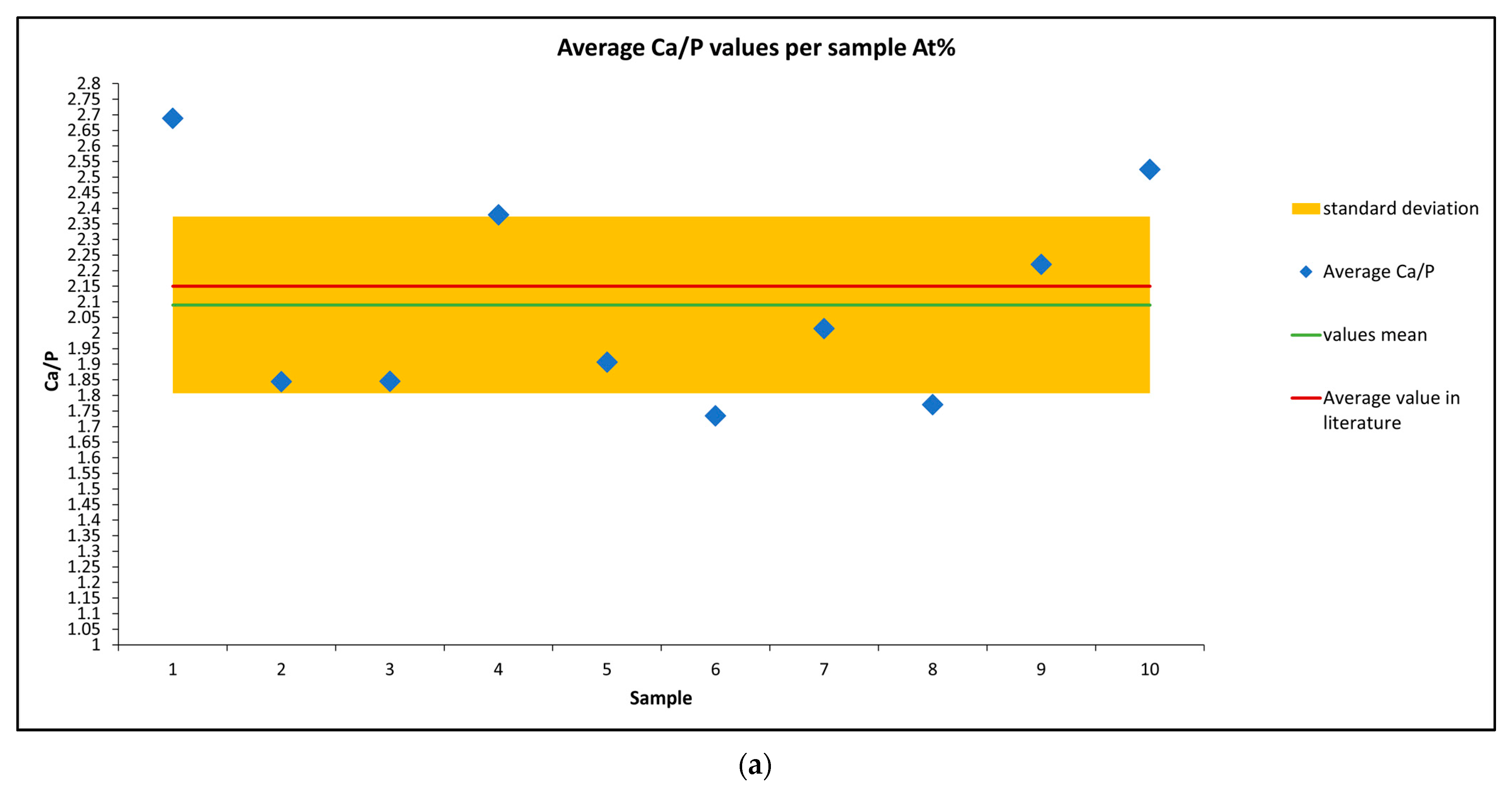
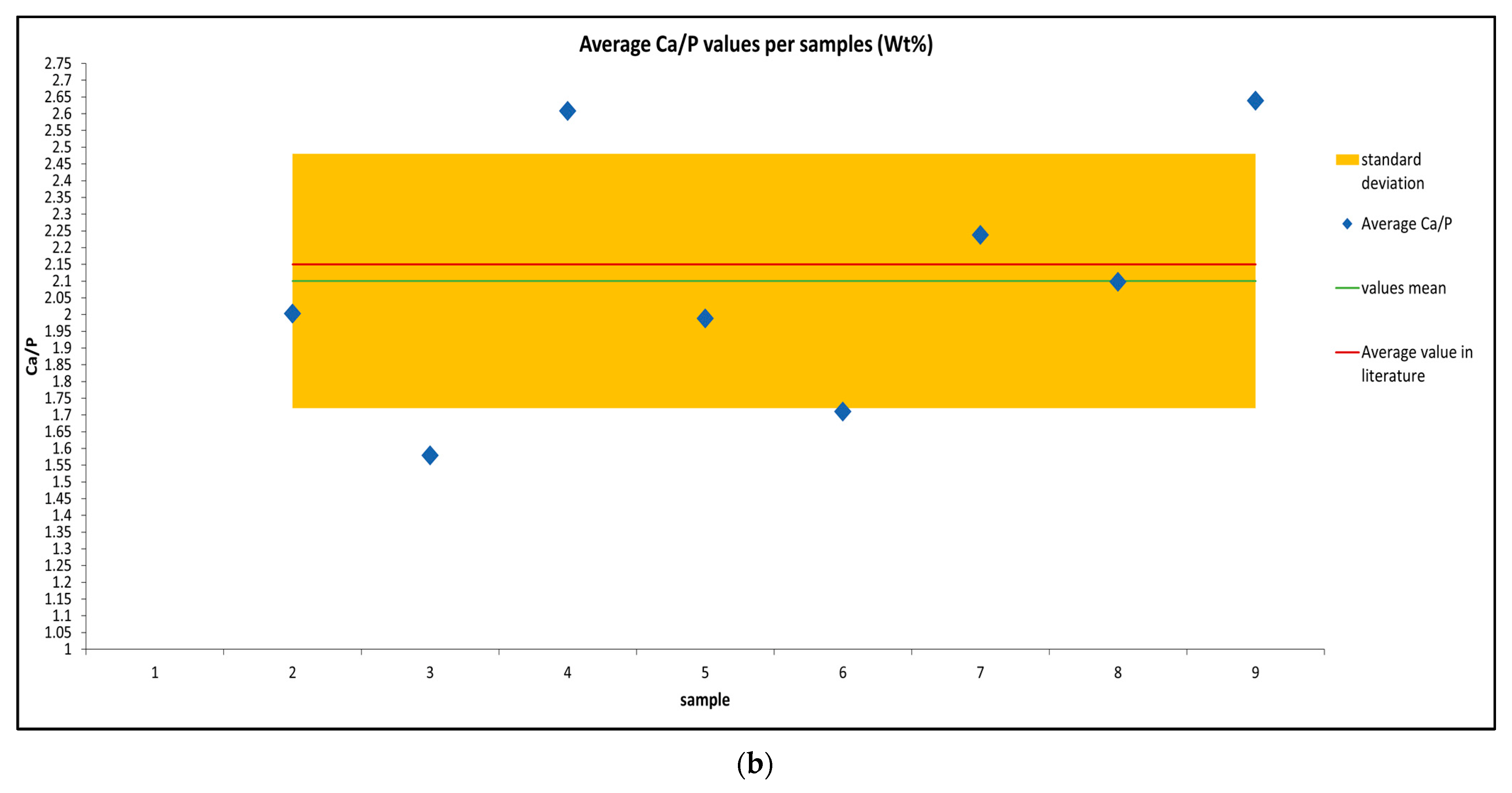
| Sample | Stereo Microscope | SEM-EDS (Encrustation) | SEM-EDS (Stone vs. Encrustation) | Pollen Analysis | Material | Chronological and Contextual Information | Stratigraphic Unit |
|---|---|---|---|---|---|---|---|
| 1 | X | X | Wall 1 (“parete 1”) (inner part) | ? | 3071 | ||
| 2 | X | X | X | X | Wall 3 (“parete 3”) (outer part) | PHASE 2B: (1) 824–847 CE; (2) 847-end of 9th c., use level (p. 61) | 3064 |
| 3 | X | X | Bottom with wall (“fondo con parete”) (outer part) | PHASE 2C: late 9th to first half of 10th c., use level (p. 61) | 3008 | ||
| 4 | X | X | X | X | Bottom (“fondo”) (outer part) | PHASE 2B: (1) 824–847 CE; (2) 847-late 9th c., use level (p. 61) | 3064 |
| 5 | X | X | X | Big Bottom (“fondo grande”) (inner part) | PHASE 2B—(1) 824–847 CE (2) 847-late IX c—use level/growth level (p. 61) | 3065 | |
| 6 | X | X | X | X | Rim (“orlo”) (outer part) | PHASE 2B—(1) 824–847 CE (2) 847-late IX c—use level/growth level (p. 61) | 3065 |
| 7 | X | X | X | Bottom with the wall’s base, (“Fondo con base parete”) (inner part, corner between the bottom and wall base) | PHASE 2C: late 9th to first half of 10th c., use level (p. 61) | 3038 | |
| 8 | X | X | X | X | Little bottom (“Fondo piccolo”) (inner part) | PHASE 2B: (1) 824–847 CE; (2) 847-late 9th c., use level/growth level (p. 61) | 3065 |
| 9 | X | X | Bottom with wall (“Fondo con parete”) (outer part) | PHASE 2B: (1) 824–847 CE; (2) 847-late 9th c.—growth level caused by fireplace use (p. 61) | 3057 | ||
| 10 | X | X | X | Bottom with a little carbon (“Fondo con carboncino”) (inner part) | PHASE 3: beginning of 11th–13th c.—growth level (pp. 65–66) | 3044 |
| Sample 2 | |||||||||||||||||
| Wt% | C | O | Na | Mg | Al | Si | P | S | Cl | K | Ca | Cr | Mn | Ti | Fe | Ni | Tot. |
| Sp. 18 | 2.07 | 49.5 | 0.41 | 17.73 | 1.69 | 21.96 | 0.4 | 0.34 | 0.28 | 0.74 | 4.53 | 0.34 | 100 | ||||
| Sp. 19 | 46.38 | 36.61 | 0.17 | 6.62 | 0.49 | 7.28 | 0.18 | 0.13 | 0.08 | 0.36 | 1.71 | 100 | |||||
| Sp. 20 | 2.8 | 46.66 | 0.44 | 17.16 | 1.96 | 22.15 | 0.53 | 0.32 | 0.25 | 1.03 | 0.35 | 5.83 | 0.51 | 100 | |||
| Sample 4 | |||||||||||||||||
| Wt% | C | O | Na | Mg | Al | Si | P | S | Cl | K | Ca | Cr | Mn | Ti | Fe | Ni | Tot. |
| Sp. 27 | 8.87 | 41.37 | 16.4 | 0.37 | 26.41 | 0.13 | 0.11 | 0.44 | 5.5 | 0.41 | 100 | ||||||
| Sp. 28 | 14.36 | 44.42 | 13.66 | 1.75 | 10.37 | 0.28 | 0.28 | 2.53 | 0.58 | 0.23 | 11.53 | 100 | |||||
| Sp. 29 | 18.91 | 42.25 | 11.86 | 1.13 | 5.9 | 0.48 | 0.28 | 4.64 | 0.28 | 0.49 | 13.77 | 100 | |||||
| Sp. 30 | 22.09 | 36.99 | 11.62 | 0.38 | 17.8 | 0.64 | 0.27 | 5.53 | 4.25 | 0.44 | 100 | ||||||
| Sample 6 | |||||||||||||||||
| Wt% | C | O | Na | Mg | Al | Si | P | S | Cl | K | Ca | Cr | Mn | Ti | Fe | Ni | Tot. |
| Sp. 58 | 15.29 | 46.98 | 14.62 | 3.35 | 14.78 | 0.13 | 0.23 | 0.07 | 0.19 | 4.11 | 0.26 | 100 | |||||
| Sp. 59 | 22.86 | 42.9 | 0.19 | 11.1 | 0.49 | 15.92 | 0.11 | 0.25 | 0.25 | 0.15 | 1.37 | 0.27 | 3.89 | 0.24 | 100 | ||
| Sp. 60 | 32.11 | 40.69 | 0.16 | 8.79 | 0.6 | 11.09 | 0.1 | 0.37 | 0.1 | 0.09 | 0.55 | 5.08 | 0.27 | 100 | |||
| Sp. 61 | 30.99 | 40.71 | 0.96 | 9.61 | 0.17 | 13.41 | 0.48 | 0.64 | 0.34 | 0.59 | 2.09 | 100 | |||||
| Sample 8 | |||||||||||||||||
| Wt% | C | O | Na | Mg | Al | Si | P | S | Cl | K | Ca | Cr | Mn | Ti | Fe | Ni | Tot. |
| Sp. 69 | 12.87 | 45.22 | 15.35 | 0.26 | 23.57 | 0.27 | 0.12 | 2.33 | 100 | ||||||||
| Sp. 70 | 24.52 | 42.17 | 11.99 | 3.33 | 9.71 | 0.15 | 1.03 | 0.16 | 0.69 | 6.04 | 100 | ||||||
| Sp. 71 | 18.78 | 43.44 | 13.49 | 0.66 | 19.38 | 0.14 | 0.54 | 0.13 | 0.21 | 3.24 | 100 | ||||||
| Sp. 72 | 26.64 | 39.46 | 11.15 | 0.35 | 16.57 | 0.24 | 1.19 | 0.37 | 0.2 | 3.83 | 100 | ||||||
| Sp.73 | 20.7 | 40.01 | 11.38 | 0.34 | 17.76 | 0.5 | 2.58 | 2.39 | 0 | 4.34 | 100 | ||||||
| Pollen | Total Number | Sample 1 | Sample 2 | Sample 3 | Sample 4 | Sample 5 | Sample 6 | Sample 7 | |
|---|---|---|---|---|---|---|---|---|---|
| AMARANTHACEAE | Chenopodium indiff. | 3 | / | / | / | / | / | / | 3 |
| CICHORIOIDEAE | Cichorioideae indiff. | 5 | 4 | / | / | / | / | 1 | / |
| BRASSICACEAE | Crucifera sinapis tipo | 2 | / | / | / | / | 1 | / | 1 |
| FABACEAE | Fabaceae indiff. | 1 | / | / | / | / | / | / | 1 |
| Leguminosa lotus o onix tipo | 2 | 2 | / | / | / | / | / | / | |
| LAMIACEA | Mentha | 1 | / | / | / | 1 | / | / | / |
| PINACEAE | Pinus indiff | 1 | 1 | / | / | / | / | / | / |
| POACEAE (Graminacee) | Poacee spontanee group | 10 | 5 | / | / | 2 | / | / | 3 |
| Poll Indet. | 3 | / | / | / | 1 | 1 | 1 | / | |
| URTICACEAE | Urticaceae indiff | 1 | 1 | / | / | / | / | / | / |
| Spore | Total Number | Sample 1 | Sample 2 | Sample 3 | Sample 4 | Sample 5 | Sample 6 | Sample 7 |
|---|---|---|---|---|---|---|---|---|
| Ascospora | 41 | / | / | / | / | / | / | 41 |
| Cladosporium | 1 | 1 | / | / | / | / | / | 7 |
| Epicoccum | 5 | / | / | / | / | / | / | 5 |
| Equisetum | 1 | / | / | / | 1 | / | / | / |
| Generic spores | 29 | 2 | 2 | 1 | 1 | 1 | 1 | 21 |
| Sample | Ca/P Median | Standard Deviation | Standard Deviation of Average, At% |
|---|---|---|---|
| 1 | 2.688 | / | 0.283 |
| 2 | 1.844 | 0.531 | |
| 3 | 1.845 | 0.544 | |
| 4 | 2.379 | 0.327 | |
| 5 | 1.906 | 0.574 | |
| 6 | 1.734 | 0.552 | |
| 7 | 2.014 | 0.404 | |
| 8 | 1.769 | 0.393 | |
| 9 | 2.220 | 0.353 | |
| 10 | 2.524 | 0.214 | |
| 2.092 | average of averages |
| Samples | Ca/P Median | Standard Deviation | Standard Deviation of Average, Wt% |
|---|---|---|---|
| 1 | / | / | 0.380 |
| 2 | 2.002 | 0.504 | |
| 3 | 1.579 | 0.463 | |
| 4 | 2.608 | / | |
| 5 | 1.988 | 0.583 | |
| 6 | 1.709 | 0.514 | |
| 7 | 2.238 | 0.268 | |
| 8 | 2.097 | 0.417 | |
| 9 | 2.639 | 0.153 | |
| 10 | / | / | |
| 2.101 | average of averages |
Disclaimer/Publisher’s Note: The statements, opinions and data contained in all publications are solely those of the individual author(s) and contributor(s) and not of MDPI and/or the editor(s). MDPI and/or the editor(s) disclaim responsibility for any injury to people or property resulting from any ideas, methods, instructions or products referred to in the content. |
© 2023 by the authors. Licensee MDPI, Basel, Switzerland. This article is an open access article distributed under the terms and conditions of the Creative Commons Attribution (CC BY) license (https://creativecommons.org/licenses/by/4.0/).
Share and Cite
Monaco, D.; Saggioro, F.; Marrocchino, E.; Vaccaro, C.; Marchesini, M. Archaeometric Analysis of Encrustations Adhering to Pietra Ollare Fragments from the Medieval Village of Nogara. Heritage 2023, 6, 3365-3384. https://doi.org/10.3390/heritage6040178
Monaco D, Saggioro F, Marrocchino E, Vaccaro C, Marchesini M. Archaeometric Analysis of Encrustations Adhering to Pietra Ollare Fragments from the Medieval Village of Nogara. Heritage. 2023; 6(4):3365-3384. https://doi.org/10.3390/heritage6040178
Chicago/Turabian StyleMonaco, Dario, Fabio Saggioro, Elena Marrocchino, Carmela Vaccaro, and Marco Marchesini. 2023. "Archaeometric Analysis of Encrustations Adhering to Pietra Ollare Fragments from the Medieval Village of Nogara" Heritage 6, no. 4: 3365-3384. https://doi.org/10.3390/heritage6040178
APA StyleMonaco, D., Saggioro, F., Marrocchino, E., Vaccaro, C., & Marchesini, M. (2023). Archaeometric Analysis of Encrustations Adhering to Pietra Ollare Fragments from the Medieval Village of Nogara. Heritage, 6(4), 3365-3384. https://doi.org/10.3390/heritage6040178











